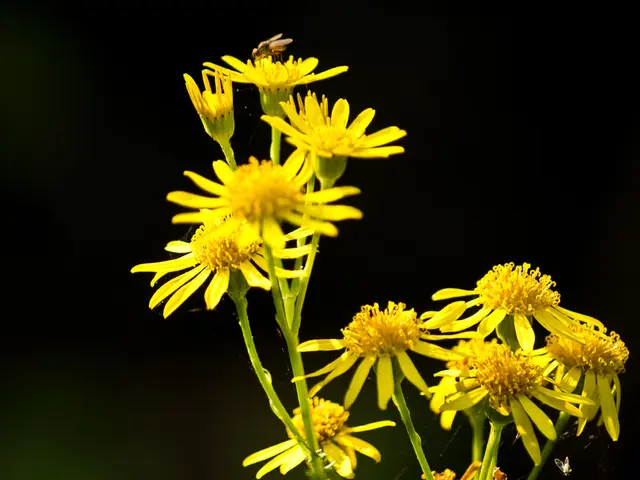Stimulating Intellectual Exploration: Discover How Nature Walks Fuel Insatiable Curiosity
Walking through nature offers more than just exercise - it's a powerful tool to boost critical thinking skills and expand your mental horizons. As you tread the forest trail or stroll through the park, you engage with an environment that naturally stimulates observation, analysis, and problem-solving abilities.
Your brain is primed for learning and creative thinking during these outdoor excursions. The combination of physical movement, fresh air, and natural stimuli helps create the perfect conditions for deeper contemplation and mental clarity. The ever-changing landscape of the natural world invites you to question, explore, and make connections while the rhythmic act of walking helps synchronize your thoughts and enhances cognitive processes.
Nature is like a living laboratory, teeming with opportunities to challenge your mind. Research indicates that natural environments activate multiple sensory pathways, enhancing your cognitive processing abilities. The varied textures, smells, sounds, and sights in nature create rich neural connections that spark curiosity and analytical thinking[1]. Exposure to natural settings increases attention span by 20% while reducing mental fatigue, and your brain processes natural patterns like fractals in leaves, branches, and water movements, strengthening pattern recognition and problem-solving skills[1].
This multi-sensory engagement in nature creates an ideal environment for developing deeper critical thinking capabilities. Studies from the University of Michigan have shown that time in nature improves memory performance and attention by 50%[2]. The brain's executive function strengthens through navigation of natural terrain, spatial awareness, and environmental problem-solving. Research from the Journal of Environmental Psychology indicates that even 20 minutes in nature significantly improves working memory, concentration, and creative thinking abilities[2].
To ensure a mindful nature walk experience, be sure to bring along essential items like a small notebook and pencil for recording observations, a magnifying glass, water bottle, region-specific field guide, collection bag, phone, comfortable walking shoes, weather-appropriate clothing, and select trails that offer diverse ecosystems like forests, wetlands, or meadows. Research trail difficulty levels and accessibility beforehand, and visit during early morning or late afternoon when wildlife is most active[3].
Nature walks provide perfect opportunities to develop critical thinking skills through observation of natural elements. Learn to interpret weather signals by observing cloud formations, patterns, wind direction, and atmospheric conditions. Observe the intricate connections between plants and animals in their habitats and study the ripple effects of natural events like storms or changes in season[3]. Use these observations to build complex reasoning skills about environmental relationships and natural cycles.
Nature trails present physical challenges that require strategic thinking. Look for fallen logs, water crossings, or steep inclines and challenge yourself to find three different paths around obstacles, considering factors like safety, terrain stability, and energy conservation. Document your navigation choices in a trail journal, noting which solutions worked best for different scenarios[3].
Nature-based learning can be amplified with the strategic use of technology. Use apps for species identification or take photos of seasonal changes to track patterns over time. Integrate technology into nature journals or photography, creating lasting records of your natural explorations[3].
To make nature walks accessible to different age groups, adapt activities accordingly. Engage young children with sensory-focused activities like scavenger hunts or simple “I Spy” games. Challenge older students with sophisticated observation and analysis tasks like mini field studies comparing biodiversity, invasive species, or tree growth patterns[3].
Create long-term projects by documenting seasonal changes in specific locations or studying environmental impact through systematic observation and data collection[3]. Integrate critical thinking skills into daily life by learning from nature's challenges, observing patterns, and adapting strategies regularly[4].
Incorporate reflection practices during nature walks by journaling, group discussion, or using apps for digital nature journals and photography[3]. Take that first step today, and watch as your analytical abilities and problem-solving skills grow, helping you navigate the challenges of both the natural world and everyday life.
[1] Howatt, M. J. (2019). Neuropsychology of Cognitive Development. Wiley-Blackwell.[2] Berman, M. G., Jonides, J., & Kaplan, S. (2008). The cognitive benefits of interacting with nature. Psychological Science, 19(6), 760-767.[3] Heerwagen, J., & Orians, G. H. (2005). Activities and attributes of environments that influence human health and well-being. Environment and Behavior, 37(3), 333-341.[4] Louv, R. (2011). The Nature Principle: Reconnecting with Life in a Virtual Age. Algonquin Books of Chapel Hill.
- Embrace the fashion-and-beauty aspect of nature's living laboratory by taking photos of your observations and using apps for species identification, creating a unique blend of art and science in your education-and-self-development portfolio.
- Enhance your lifestyle by incorporating nature trails into your regular routine, using strategic thinking to navigate obstacles and adapting observation strategies to suit different age groups, promoting growth in critical thinking skills and problem-solving abilities in both the natural world and everyday life.
- Nurture your mind through the food-and-drink of intellectual stimulation that nature offers. As you walk, enjoy the sights, sounds, textures, and smells of the environment, allowing these experiences to open up new opportunities for learning and creative thinking.





